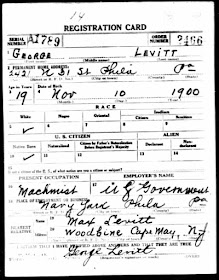Well it turns out the gravestone was all in Hebrew.
 |
| Photo courtesy L. Seigle, via R. Seigle, Jerusalem |
"My eyes were like springs of water because of my dear and honorable husbands death Rabbi Simcha son of Yehuda Seigle (סיגעל). Passed away in old age. Died on second and buried on third of Tamuz in year 5679."He also notes that "The numbers slightly do not match as the second of Tamuz is about 1 July and on the death certificate his death is July 7th."
I shared the image at JewishGen's ViewMate and got a slightly different translation from Lara Diamond of Lara's Family Search blog:
"Fountains of water fall from my eyesAnother translation from Sheindle Cohen at ViewMate:
On the death of my husband
The dear and honored Reb
Simcha son of Yehuda Siegel
What like sleep his rest
On the 20th day and was buried on the ?? day
Of the month of Tamuz in the year 5679
May his soul dwell in everlasting life"
"Streams of water shed from my eyesMonday, July 7, 1919, corresponds to 9 Tamuz 5679, so "Day Two" (two days after Shabbat) makes sense, and he was likely buried on July 8, which was 10 Tamuz 5679.
On the death of my husband
The dear and honorable Reb
Simcha son of Reb Yehuda Segal
[Who]died in good old age on day Two (Monday)
and was buried on day Three (Tuesday)
10th(?)day of the month of Tamuz
Year 5679
May His Soul Be Bound in the Bindings of Life"
There is something to be found in each of these translations, and I thank everyone for their assistance.




































